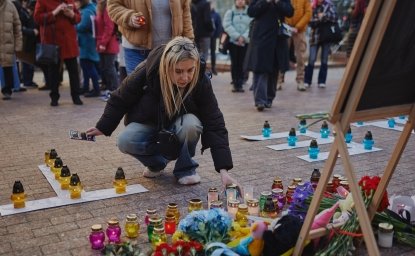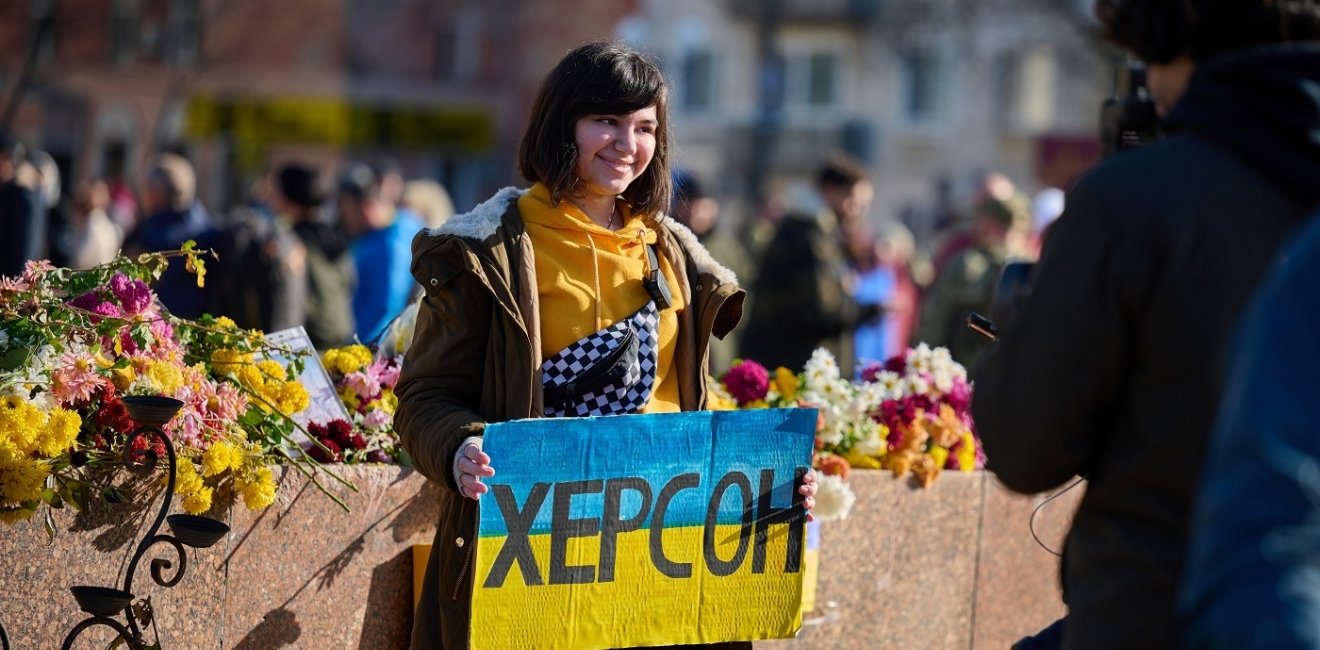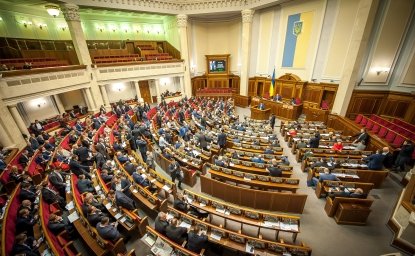
A blog of the Kennan Institute
On November 11, Ukraine’s president Volodymyr Zelensky announced the liberation of Kherson from Russian occupiers. When the troops left the city, they destroyed all the critical infrastructure, leaving the city without electricity, water, heating, or communications. Though Kherson residents try to draw hope from the relatively rapid restoration of services after the spring assault on Kyiv and other Ukrainian cities, it is becoming increasingly clear that the damage inflicted by the Russian troops cannot be remediated quickly. And in this divided city, the Russians are still within shelling distance.
Russians on the Left Bank, Ukrainians on the Right
Before the Russian invasion of Ukraine, Kherson, the capital of Kherson oblast, was home to about 300,000 people. It is situated on the right bank of the Dnipro river, and part of the city's territory is located on the adjacent islands and floodplains that overlook the left bank.
Kherson was a stronghold of the Russian army, which used it to attack Ukrainian territory on the right bank. When the occupiers were forced to flee Kherson after a successful counteroffensive by the Ukrainian armed forces, they decided to destroy all civilian infrastructure in the city: they blew up power plants and heating plants, mined water pipes, and destroyed mobile phone towers. They also stole ambulances and equipment from fire stations, took everything of any value from public institutions, and released all prisoners from prisons, including those convicted of serious crimes.
Back in August the Russians, with the help of local collaborators, held a faux referendum in Kherson on the annexation of Kherson oblast to Russia, and President Vladimir Putin solemnly signed a decree that brought the region within the Russian Federation, in the Kremlin’s eyes. Three months later, the Russians do everything possible to make life in this city, now under Ukrainian control, unbearable, shelling and shooting from the left bank of the Dnipro. Civilians die every day from these attacks, while hospitals are forced to operate at full capacity without installed electricity, heating, or water, relying instead on generators.
The situation that the Ukrainian authorities found back in Kherson contrasts with the state in which the Russian occupants left the towns and villages of Kyiv, Chernihiv, and Sumy regions when they withdrew at the end of March 2022. It is more similar to the situation in Kharkiv and Donetsk oblasts, where the Ukrainian army liberated parts of the occupied territories this fall. Unlike most of the formerly occupied territories, Kherson suffered little from shelling. The city functioned perfectly: there was electricity and communications, public transport worked, and the public services coped with their tasks.
At the same time, however, local residents share horror stories of life under occupation. For example, a young woman told me that a Russian sniper killed her husband as she was driving home with him and their six-year-old child. The family had delayed their homeward journey a few minutes after the start of the curfew, and the occupying forces seized on this as a reason to shoot the driver. Every second resident of Kherson has seen relatives and friends arrested by the Russians because they had acquaintances in the Ukrainian military. Many were tortured. In just a couple of weeks after the liberation of the occupied territories, Ukrainian investigators discovered more than fifty unmarked graves and identified more than 200 bodies.
When the Russians left Bucha in April, the streets were quickly cleared of military equipment and mines, and local authorities and volunteers had started repairing the destroyed houses. It was spring, the lack of heating was less significant, and many more resources were available to restore everyday life, including funding and equipment from international donors.
In Kherson, there has been no piped water, electricity, or heat in the three weeks since the occupiers withdrew, and though local residents rejoiced at the de-occupation during the first few days, it is becoming increasingly difficult to hold on without the means to meet basic needs.
The city is trying to return to life, just as Kyiv did after the first months of the invasion, but so far without success. The Russian forces across the river are doing all they can to destroy any sign of normalcy in the once occupied city.
The opinions expressed in this article are those solely of the author and do not reflect the views of the Kennan Institute.
Author


Kennan Institute
After more than 50 years as a vital part of the Wilson Center legacy, the Kennan Institute has become an independent think tank. You can find the current website for the Kennan Institute at kennaninstitute.org. Please look for future announcements about partnership activities between the Wilson Center and the Kennan Institute at Wilson Center Press Room. The Kennan Institute is the premier US center for advanced research on Eurasia and the oldest and largest regional program at the Woodrow Wilson International Center for Scholars. The Kennan Institute is committed to improving American understanding of Russia, Ukraine, Central Asia, the South Caucasus, and the surrounding region through research and exchange. Read more

Explore More in Focus Ukraine
Browse Focus Ukraine
Talking to the Dead to Heal the Living

Ukrainian Issue in Polish Elections


